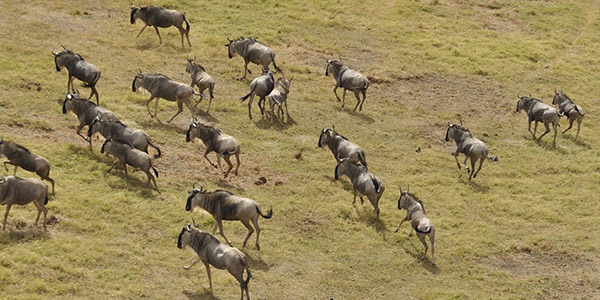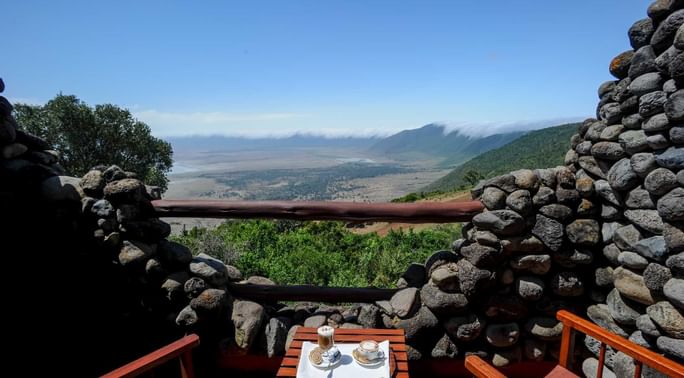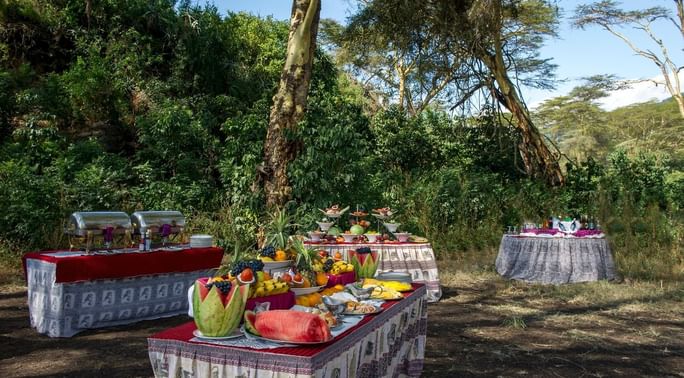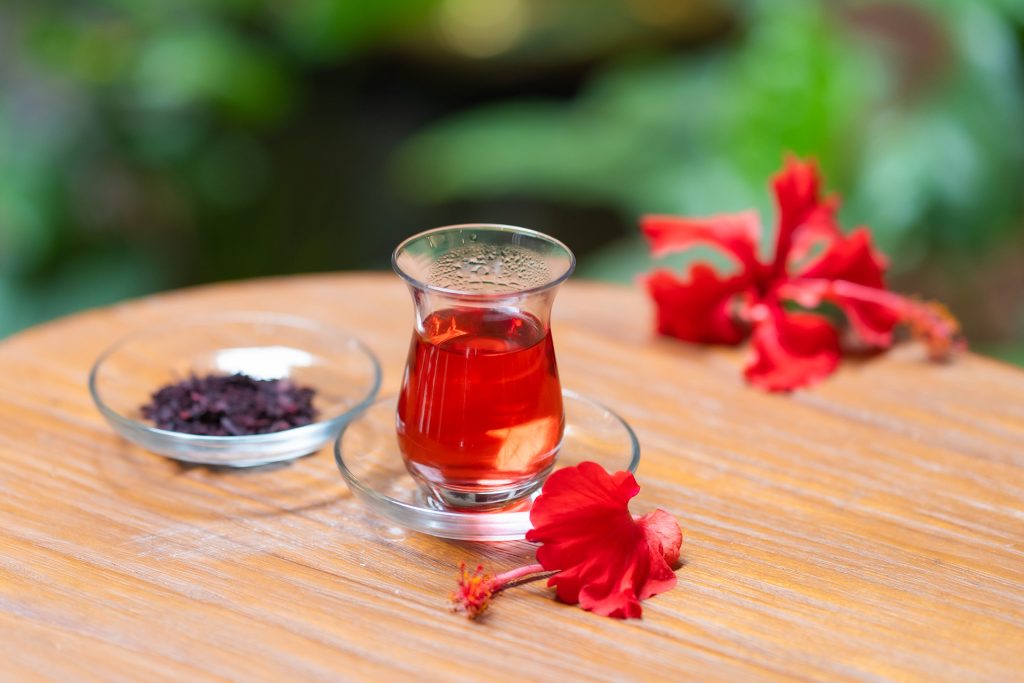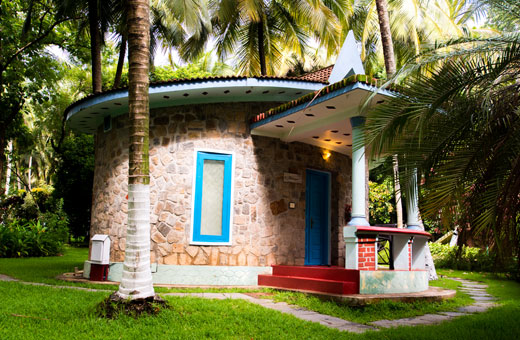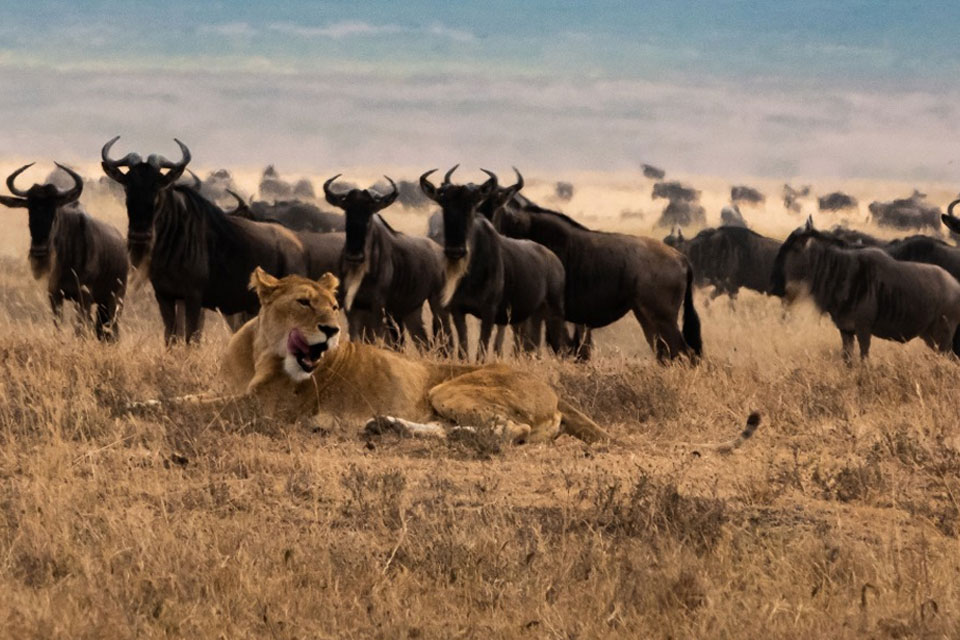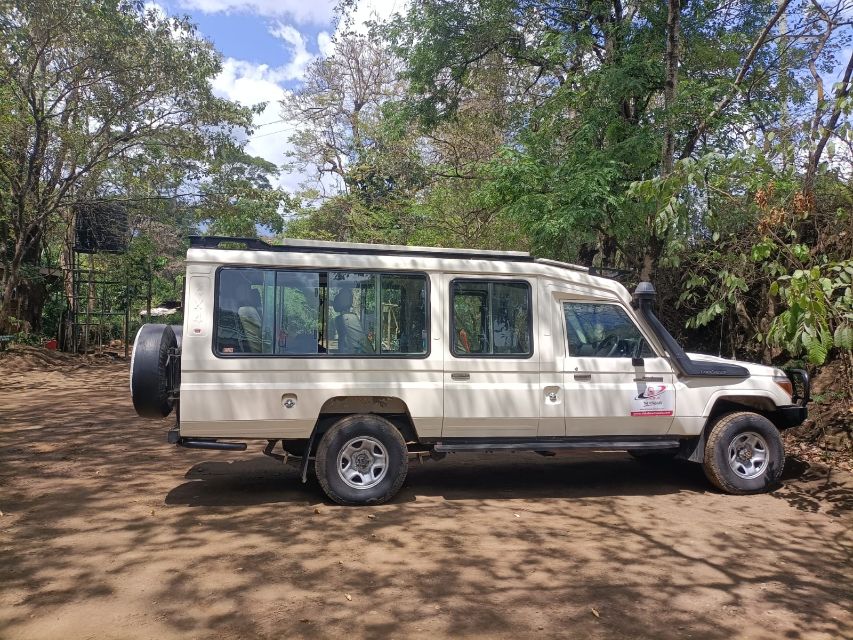Each year, the wildebeest and other animals (zebras, gazelles, giraffe and more) follow their instincts in a circular route from the northern Serengeti in Tanzania to the south of Masai Mara in Kenya, and to witness it is to witness one of the greatest shows on earth.
Many people ask us where the best place is to witness this natural phenomenon. The answer truly is: It depends. Here, we’ll compare the Serengeti and Masai Mara to give you an idea of what you’ll find in each location.
Landscapes & Ecosystems
Images in the media tell the world that the Serengeti is vast, dry and barren, when the truth is that this 30,000 square kilometer protected space contains myriad ecosystems including flat, gold savannah, lush vegetation, fauna and flora in the wet season, lakes, forests and more. The rainfall determines what will grow in each region of the Serengeti, but the land is so big that it contains diverse ecosystems within it that you might not expect. Masai Mara is much smaller at only 1150 square kilometers and is much hillier. The landscape has more open savannahs dotted by scrub, with grasslands and woodlands near the Mara River. The wide-open landscape of most of Masai Mara gives visitors amazing views of what lies within.
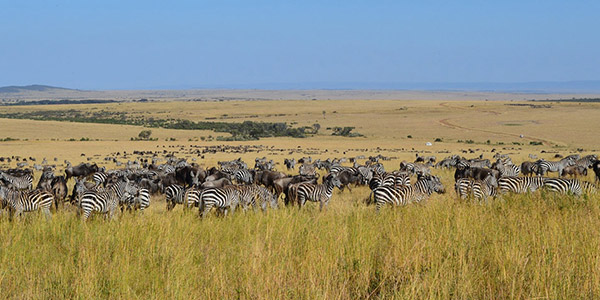
Rivers
The Grumeti River in the Serengeti and the Mara River that flows from Masai Mara into the Serengeti are the two rivers that are most important for the migration – though both regions have smaller water systems to serve the animals on their journeys. But these two major rivers are important for two reasons: they provide the wildebeest and other animals with drinking water, but they are also an obstacle point since the waters are full of crocodiles waiting for their next wildebeest feast. The river crossings happen several times in the year, as the wildebeest move back and forth across Masai Mara. June to September will give you the most dramatic views of the river crossings, with the Grumeti crossing reaching its peak in June and September marking the apex of the Mara crossing.
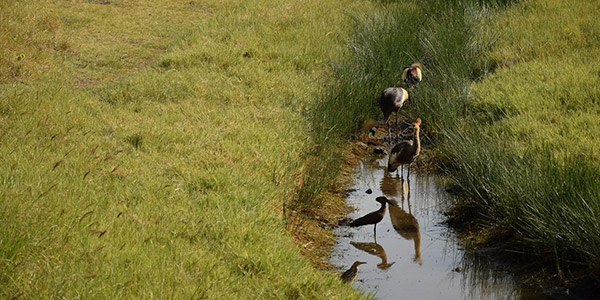
Dry vs. Green Seasons
January through March bring heavy rains to the Serengeti. The landscape grows lush, green and beautiful, and sprinkled with wildflowers. All the greenery is beautiful to see, but the lushness of it can make watching the animals a little difficult, as they hide well in the vegetation. This is also calving season for the wildabeest, with around 200,000 calves born each season.
Less rain means less vegetation as the animals migrate north towards Masai Mara. The dry months of July through September bring dryer, flat landscapes and more chances to view all the animals – predators and prey. Less rain also means that watering holes around camps and lodges attract thousands of animals which can be seen by guests.
The best time to travel is the best time that works for your schedule and your budget. No matter whether you visit the Serengeti, Masai Mara or both, it’s guaranteed to be the trip of a lifetime.
